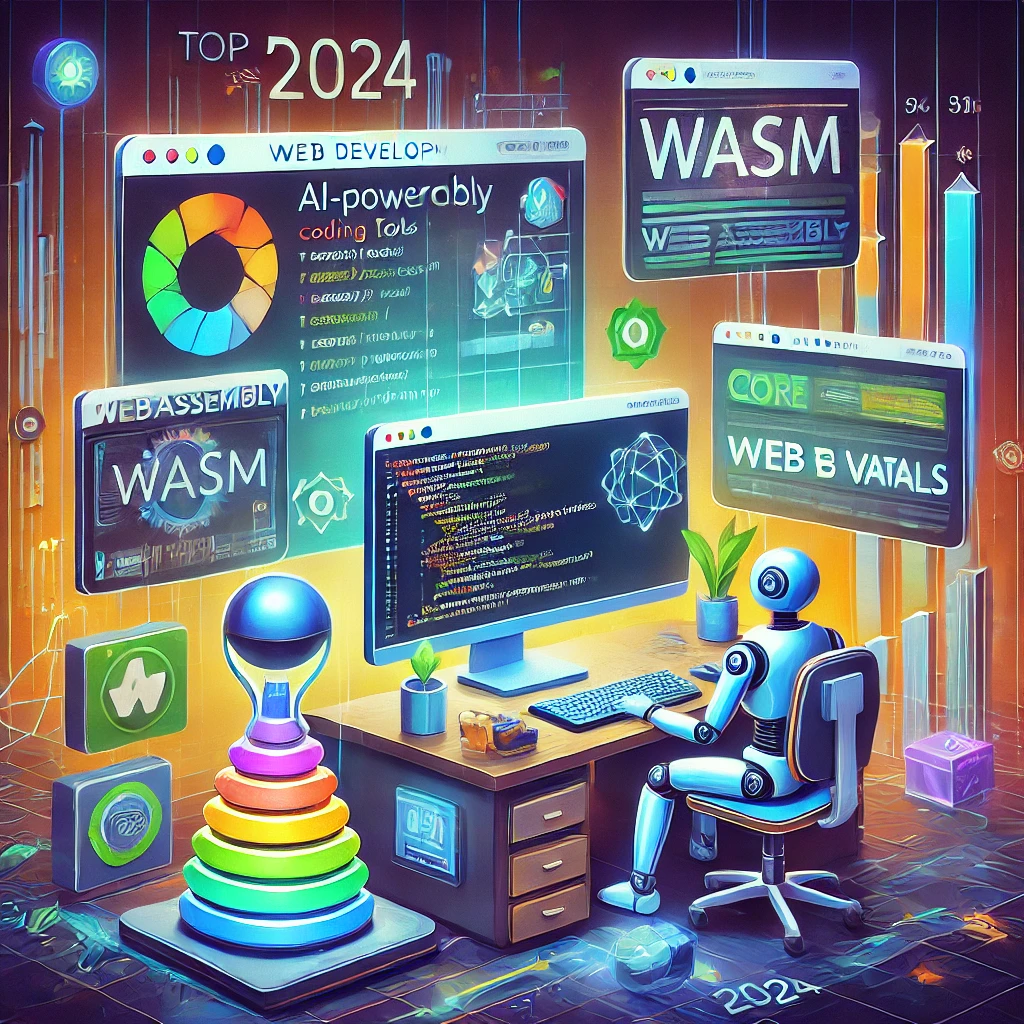Top 5 Trends Influencing Web Development in 2025
The field of web development is always changing, influenced by new technologies and what users want. In 2025, we can expect some big changes that will give developers a chance to be creative and provide meaningful online experiences. Here are the five key trends to watch this year:

1. AI in Web Development
Artificial Intelligence is changing how we build websites and improving user experiences. AI tools help make tasks easier, like:
- Writing and fixing code: Tools like GitHub Copilot help developers create effective code more quickly.
- Customized user experiences: Features powered by AI, like smart recommendations and chatbots, make sites more engaging for users.
- Testing automation: AI testing tools help find bugs and performance problems faster and more accurately.
As these AI tools become easier to use, developers will be able to create smarter and more user-friendly applications.
2. Growth of WebAssembly (WASM)
WebAssembly is becoming more popular because it allows web applications to perform nearly as well as native apps. This technology lets developers use languages like C++, Rust, and Python in browsers, leading to new opportunities such as:
- High-speed applications: Web-based tools like video editors, CAD software, and games are now more achievable.
- Compatibility across platforms:WASM helps connect desktop software and web applications, providing a smooth user experience.
- Future-ready web applications: WASM supports the development of apps that need a lot of computing power.
Expect to see more developers adopting WASM as they explore the potential of web applications.
3. Emphasis on Core Web Vitals and Improving Performance
Website performance plays a big role in user experience and search engine rankings. Google's focus on Core Web Vital (which include loading speed, interactivity, and visual stability) encourages developers to make their sites faster. Strategies include:
- Using lazy loading and content delivery networks (CDNs) to speed up loading times.
- Adopting static site generators (like Next.js or Gatsby) for better speed and scaling.
- Taking advantage of tools such as Lighthouse and PageSpeed Insights to check and improve performance.
In 2025, websites that are quick, responsive, and visually stable will stand out.
4. Growing Popularity of Progressive Web Apps (PWAs)
PWAs offer a blend of web and mobile app features, giving users an app-like experience in their browsers. The benefits of PWAs include:
- Working offline: With service workers, PWAs can function even without internet access.
- Better engagement: Features like push notifications and the ability to add apps to the home screen help keep users engaged.
- Cost savings: PWAs lower development costs by reducing the need for separate native apps.
More and more industries, such as e-commerce, education, and media, are turning to PWAs, making them important for web development in 2025.
5. Focus on Sustainable Web Development
As awareness of climate change grows, eco-friendliness is becoming increasingly important in technology. Web developers are making an effort to build energy-efficient websites by:
- Cutting down on heavy scripts and optimizing images to lessen environmental impact.
- Choosing green hosting services that use renewable energy.
- Creating "dark mode" designs that save energy on OLED and AMOLED screens.
Practicing sustainable web development not only helps the planet but also attracts users and organizations that care about the environment.
Conclusion
Web development in 2025 is all about creativity, efficiency, and responsibility. With the rise of AI tools, the advantages of WebAssembly, and the growing importance of Core Web Vitals, PWAs, and eco-friendly practices, developers have a lot of chances to innovate. By keeping up with these trends, you can create online experiences that are not only modern but also meaningful and focused on the user.